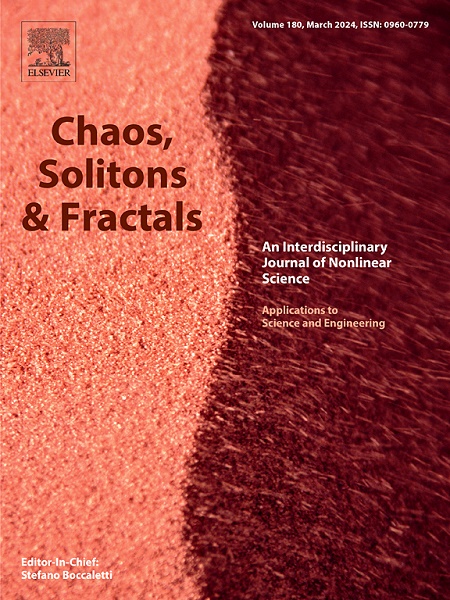Species vulnerability and ecosystem fragility: A dual perspective in food webs
IF 5.3
1区 数学
Q1 MATHEMATICS, INTERDISCIPLINARY APPLICATIONS
引用次数: 0
Abstract
Ecosystems face intensifying threats from climate change, overexploitation, and other human pressures, emphasizing the urgent need to identify keystone species and vulnerable ones. While established network-based measures often rely on a single metric to quantify a species’ relevance, they overlook how organisms can be both carbon providers and consumers, thus playing a dual role in food webs. Here, we introduce a novel approach that assigns each species two complementary scores—an importance index quantifying their centrality as carbon source and a predatory index capturing their vulnerability. We show that species with high importance index are more likely to trigger co-extinctions upon removal, while high-robustness index species typically endure until later stages of collapse, in line with their broader prey ranges. On the other hand, low robustness index species are the most vulnerable and susceptible to extinctions. Tested on multiple food webs, our method outperforms traditional degree-based analyses and competes effectively with eigenvector-based approaches, while also providing additional insights. This scalable and data-driven approach, relying solely on interaction data, provides a cost-effective tool that complements expert classifications for prioritizing conservation efforts.
物种脆弱性和生态系统脆弱性:食物网的双重视角
生态系统面临着来自气候变化、过度开发和其他人类压力的日益加剧的威胁,因此迫切需要确定关键物种和脆弱物种。虽然已建立的基于网络的测量方法往往依赖于单一指标来量化物种的相关性,但它们忽略了生物如何既是碳提供者又是消费者,从而在食物网中发挥双重作用。在这里,我们引入了一种新的方法,为每个物种分配两个互补的分数——一个量化其作为碳源的中心性的重要性指数和一个捕捉其脆弱性的掠夺性指数。我们发现,具有高重要性指数的物种更有可能在迁移时引发共同灭绝,而高稳健性指数的物种通常会持续到崩溃的后期阶段,这与它们更广泛的猎物范围一致。另一方面,低稳健性指数的物种是最脆弱的,最容易灭绝。在多个食物网上进行了测试,我们的方法优于传统的基于学位的分析,并与基于特征向量的方法有效竞争,同时还提供了额外的见解。这种可扩展和数据驱动的方法,仅依赖于交互数据,提供了一种具有成本效益的工具,补充了专家分类,以优先考虑保护工作。
本文章由计算机程序翻译,如有差异,请以英文原文为准。
求助全文
约1分钟内获得全文
求助全文
来源期刊

Chaos Solitons & Fractals
物理-数学跨学科应用
CiteScore
13.20
自引率
10.30%
发文量
1087
审稿时长
9 months
期刊介绍:
Chaos, Solitons & Fractals strives to establish itself as a premier journal in the interdisciplinary realm of Nonlinear Science, Non-equilibrium, and Complex Phenomena. It welcomes submissions covering a broad spectrum of topics within this field, including dynamics, non-equilibrium processes in physics, chemistry, and geophysics, complex matter and networks, mathematical models, computational biology, applications to quantum and mesoscopic phenomena, fluctuations and random processes, self-organization, and social phenomena.
 求助内容:
求助内容: 应助结果提醒方式:
应助结果提醒方式:


